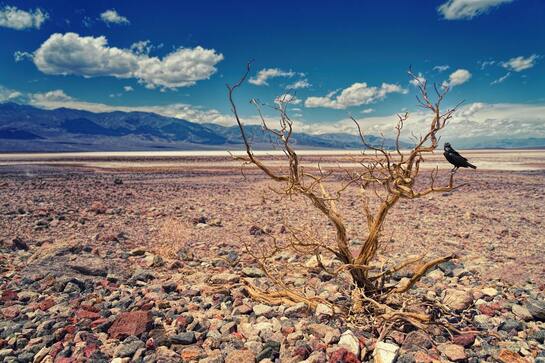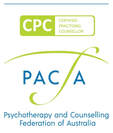 Liminal space (a term coined by anthropologist Arnold van Gennep in his 1909 book The Rites of Passage) refers to a threshold or in-between state or place, such as a transitional period or a state of ambiguity. It is often used in the context of rituals or ceremonies to describe the point at which participants are in a state of transition between their everyday lives and a new state of being or understanding. In depth psychology, liminal space can refer to a state of mind or a phase of personal development characterised by uncertainty, ambiguity, and a sense of being "in between" different states or phases. It can be a time of transition from one developmental stage of life to another and/ or a specific event or experience, such as a loss or significant change. Any experience that disrupts one's sense of identity and causes a period of confusion and re-evaluation. During liminal space, we may feel a sense of disorientation and a loss of control. We might feel unmoored or disconnected from our usual sense of self (what we identify with and/or what is familiar to us and any beliefs/assumptions we hold about ourselves or the world). Depending on how we approach these times, it can also be a time of personal growth and self-discovery as we come to understand ourselves and our place in the world in new ways. Perhaps this transitional space shows up in you as a feeling of stuckness, a void, a lostness, a not knowing, a lack of motivation, unsure what direction to move in …. you may find yourself in the aftermath of a relationship, job or role that has ended or changed form … any loss, ending or significant change may catapult you into the territory of a desert or wasteland where there are no maps and no markers (or you glimpse them briefly and then they disappear) … you may feel as though you have been abandoned here in this place which appears barren, lifeless and devoid of other inhabitants … the environment and conditions may seem harsh and available resources scarce … with few distractions in these isolated and uncultivated lands the invitation may be to befriend your solitude and the silence, spacious emptiness and mystery … to discover in your bareness, rawness, nakedness and vulnerability ... What strengths, capacities, qualities endure? “Drop your maps and listen to your lostness like a sacred calling into presence. Here, where the old ways are crumbling and you may be tempted to burn down your own house. Ask instead for an introduction to that which endures. This place without a foothold is the province of grace. It is the questing field, most responsive to magic and fluent in myth. Here, where there is nothing left to lose, sing out of necessity that your ragged heart be heard. Send out your holy signal and listen for the echo back.” - Toko-Pa Turner Although this space may not readily offer up answers, guarantees or comfort there is life in this place beneath the surface, hidden for now. It’s understandably a challenging space for our everyday thinking minds that crave familiarity and certainty and the perceived safety that accompanies these. Getting Dreamy What if we used our deep imaginations for a few moments to explore aspects of our experience that lie further away from our conscious awareness (this could be through imagery, movement, sound or making markings on paper) to engage with this inner terrain as if we were an adventurer on a quest in a new unfamiliar land. To practice an openness and curiousity to these seemingly foreign and barren lands and what they offer up to you … and to wait with wonder, heartfulness and respect for the life that is in the process of becoming and the wisdom emerging. What can support this kind of imaginal inner work? If you have meditated before you might already be familiar with ways that support an embodied connection with presence and spontaneous expression. You could experiment with this as your entry point into exploring these unknown lands and noticing what imagery, feelings, sensations arise as you allow yourself to journey into the vastness and experience the apparent emptiness of this terrain. Some people find it helpful to bring awareness to the breath, so if that feels deepening for you, start there. For other folk, a connection with presence may be found through inner or outer imagery. If using imagery as a gateway into an inner work experience see if you can also stay close to any feelings and/or sensations in the body. Our capacity to dream (both while sleeping and awake in daydream/fantasy) is natural. You may find you need to give yourself permission to explore your sensory experience in this way as a child might, knowing that it's inevitable your everyday thinking mind will comment on or attempt to analyse or interpret your experience along the way. That's ok, just notice it's happening and gently return your attention to the focus of your practice (image, feeling, sensation). “A threshold is not a simple boundary; it is a frontier that divides two different territories, rhythms and atmospheres. Indeed, it is a lovely testimony to the fullness and integrity of an experience or a stage of life that it intensifies toward the end into a real frontier that cannot be crossed without the heart being passionately engaged and woken up. At this threshold a great complexity of emotions comes alive: confusion, fear, excitement, sadness, hope. This is one of the reasons such vital crossing were always clothed in ritual. It is wise in your own life to be able to recognise and acknowledge the key thresholds; to take your time; to feel all the varieties of presence that accrue there; to listen inward with complete attention until you hear the inner voice calling you forward. The time has come to cross”. - John O'Donohue These are creative invitations and explorations that can support self-awareness, understanding and meaning making. Rather than a prescriptive formula or suggested way of approaching these states and ways of being, see if you can follow your own direct experience in the moment and let yourself be surprised. As always, safety of all kinds (physical/emotional and psychological) matters. Here is a link to a basic grounding practice that can support your connection to the present moment and offer some stability and steadiness if you feel strongly overwhelmed by or disconnected from your body/sensory experience or are new to inner work, meditation and mindfulness. Photo 1 by Johannes Plenio and Photo 2 by Vlada Karpovich on Pexels Archives
0 Comments
|
AuthorHi I'm Morgan. I’m a qualified and registered psychodynamic psychotherapist & meditation/mindfulness facilitator and mentor integrating depth psychology, trauma and attachment informed and compassion focused approaches. Disclaimer
The information provided in my writings are purely educational to support your mindfulness and/or self compassion practice and are not a substitute for therapy or medical advice. You, or anyone you are concerned about, are encouraged to seek professional support from qualified health care practitioners in your area. If you or the person you are concerned about appear at risk of self-harm or harm to others, please seek immediate assistance from your local emergency services, a registered mental health practitioner or organisation in your area or a crisis care helpline in your country. Archives |
Location & Contact
In person garden studio & clinic located in Narrabundah, Canberra, A.C.T, Australia
Online sessions via Zoom
I acknowledge the Ngunnawal people as the traditional custodians of this land on which we meet and pay my respect to the Elders of the Ngunnawal Nation both past, present and emerging. I acknowledge their continuing connection with and protection of culture, land and water.

 RSS Feed
RSS Feed
